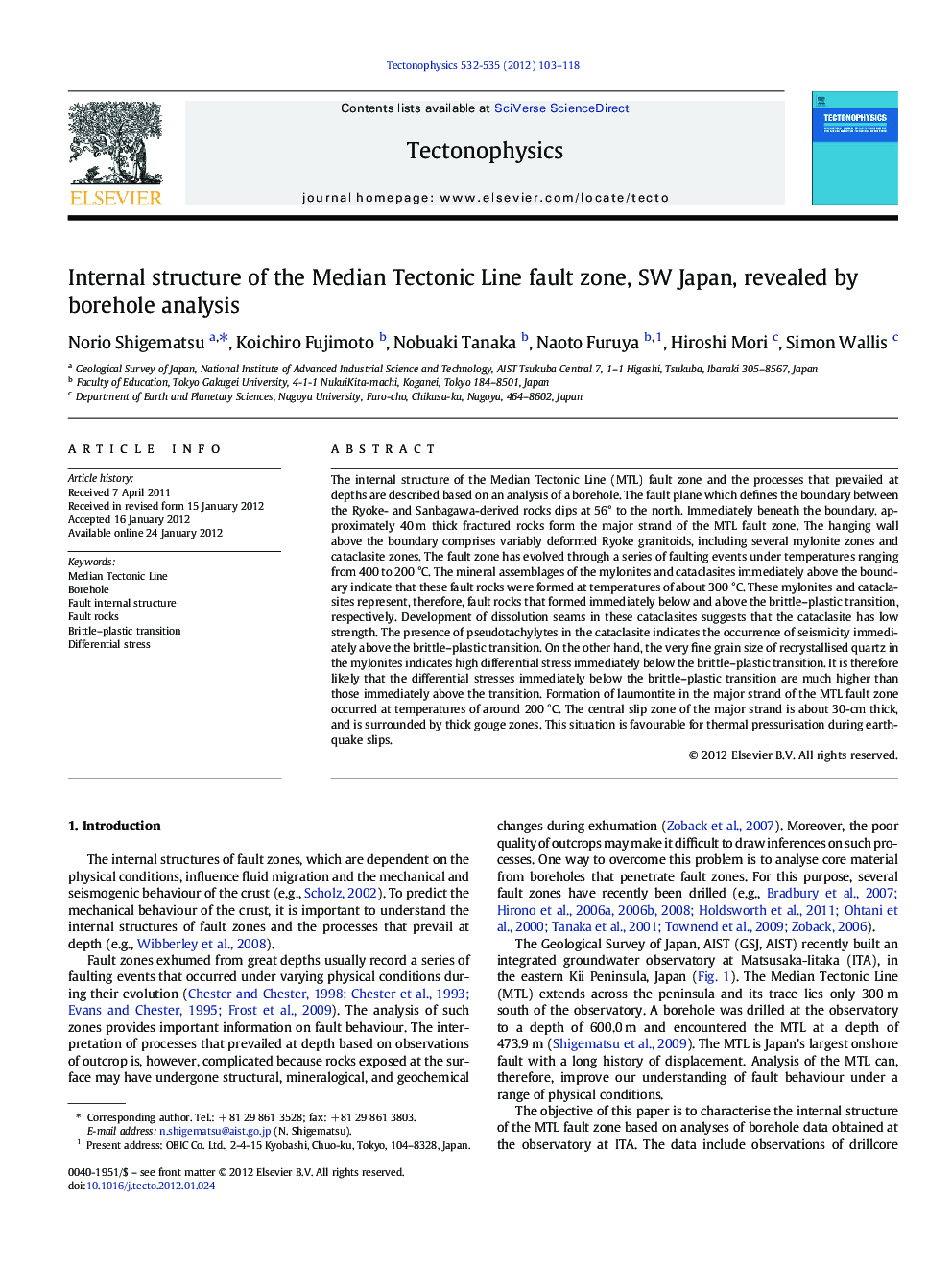| کد مقاله | کد نشریه | سال انتشار | مقاله انگلیسی | نسخه تمام متن |
|---|---|---|---|---|
| 4692855 | 1636826 | 2012 | 16 صفحه PDF | دانلود رایگان |

The internal structure of the Median Tectonic Line (MTL) fault zone and the processes that prevailed at depths are described based on an analysis of a borehole. The fault plane which defines the boundary between the Ryoke- and Sanbagawa-derived rocks dips at 56° to the north. Immediately beneath the boundary, approximately 40 m thick fractured rocks form the major strand of the MTL fault zone. The hanging wall above the boundary comprises variably deformed Ryoke granitoids, including several mylonite zones and cataclasite zones. The fault zone has evolved through a series of faulting events under temperatures ranging from 400 to 200 °C. The mineral assemblages of the mylonites and cataclasites immediately above the boundary indicate that these fault rocks were formed at temperatures of about 300 °C. These mylonites and cataclasites represent, therefore, fault rocks that formed immediately below and above the brittle–plastic transition, respectively. Development of dissolution seams in these cataclasites suggests that the cataclasite has low strength. The presence of pseudotachylytes in the cataclasite indicates the occurrence of seismicity immediately above the brittle–plastic transition. On the other hand, the very fine grain size of recrystallised quartz in the mylonites indicates high differential stress immediately below the brittle–plastic transition. It is therefore likely that the differential stresses immediately below the brittle–plastic transition are much higher than those immediately above the transition. Formation of laumontite in the major strand of the MTL fault zone occurred at temperatures of around 200 °C. The central slip zone of the major strand is about 30-cm thick, and is surrounded by thick gouge zones. This situation is favourable for thermal pressurisation during earthquake slips.
► Borehole penetrating Japan's largest onshore fault, the Median Tectonic Line.
► Various fault rocks developed under a range of physical conditions within the crust.
► Fault rocks from immediately below and above the brittle–plastic transition.
► High differential stresses immediately below the brittle–plastic transition.
► Seismogenic behaviour of a fault zone at the brittle–plastic transition.
Journal: Tectonophysics - Volumes 532–535, 6 April 2012, Pages 103–118